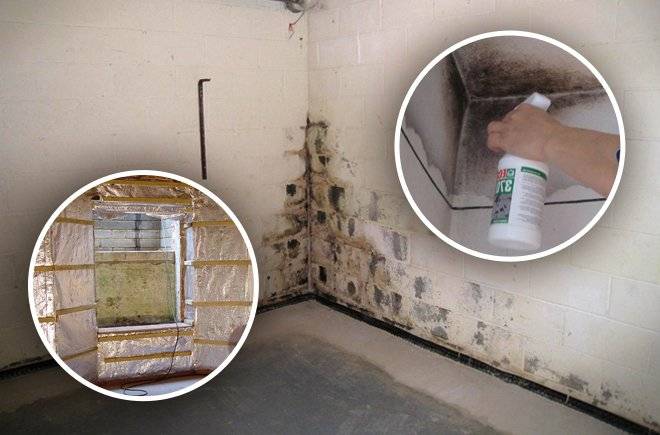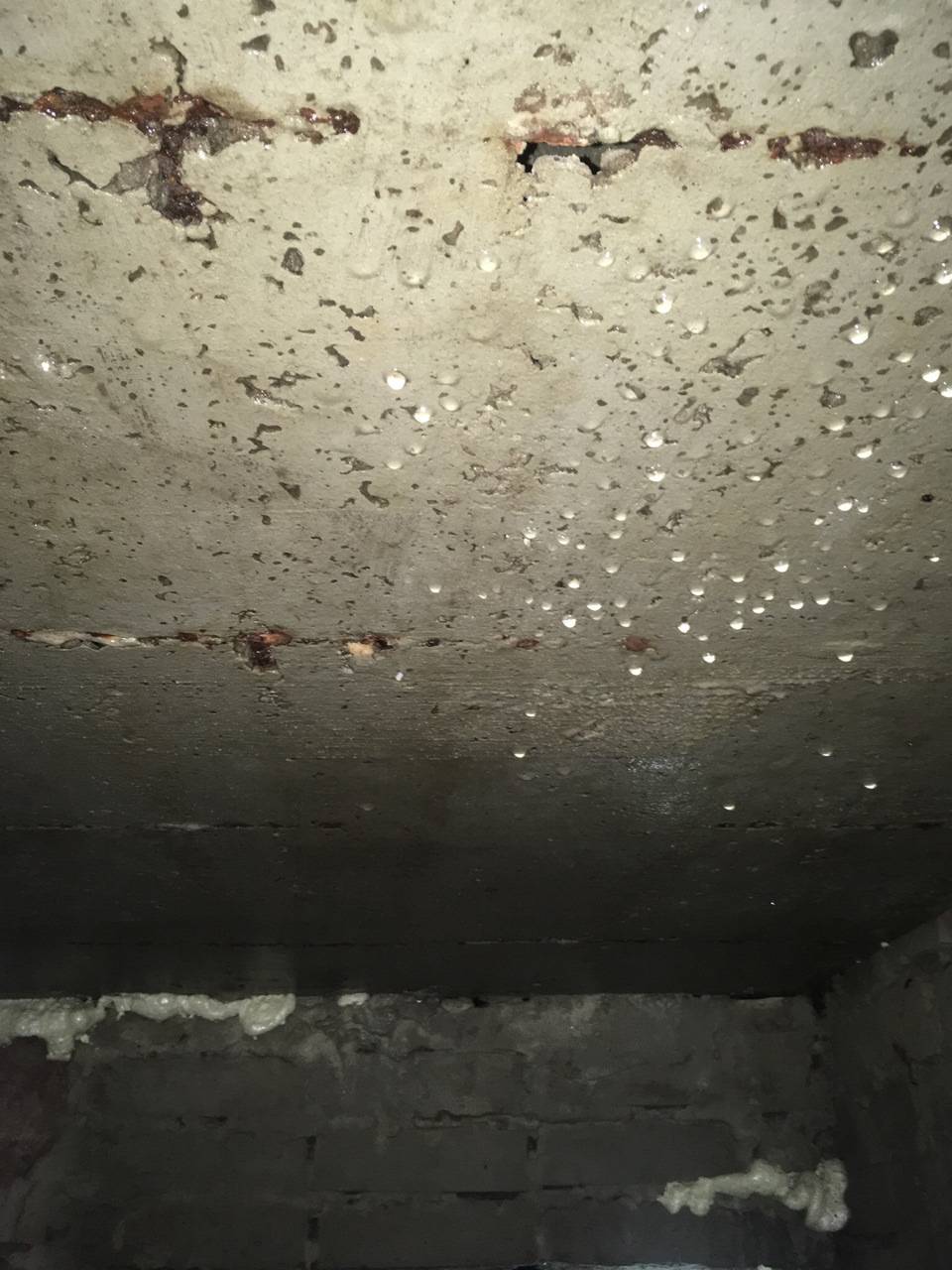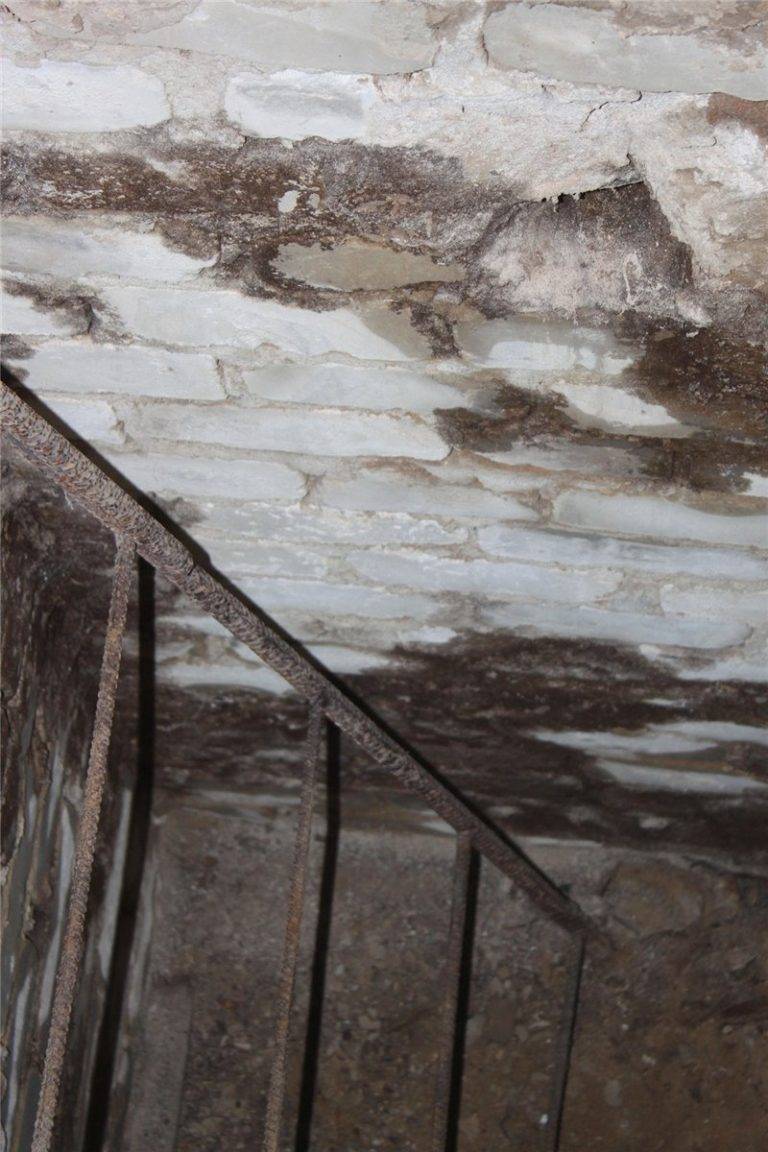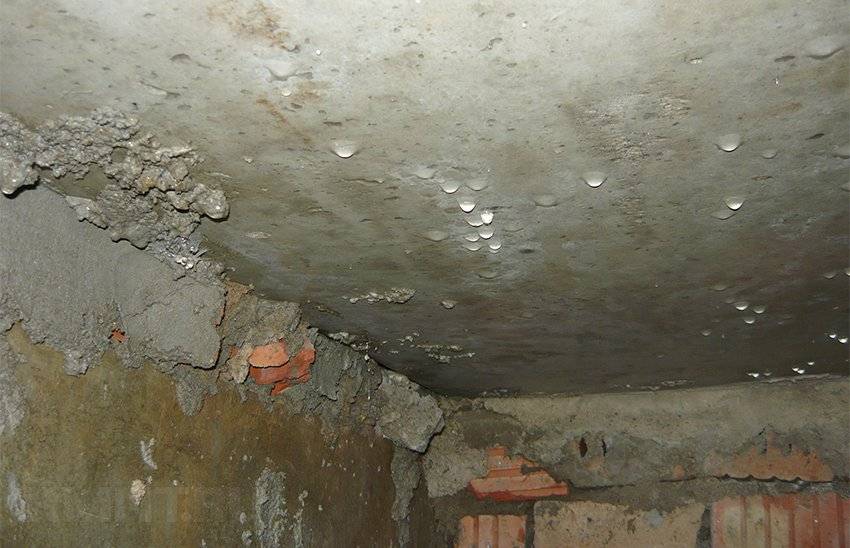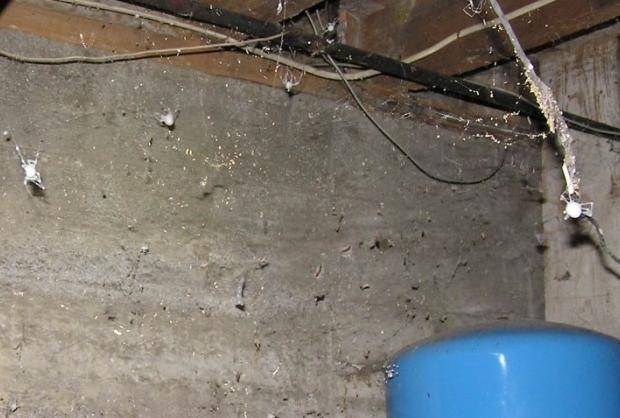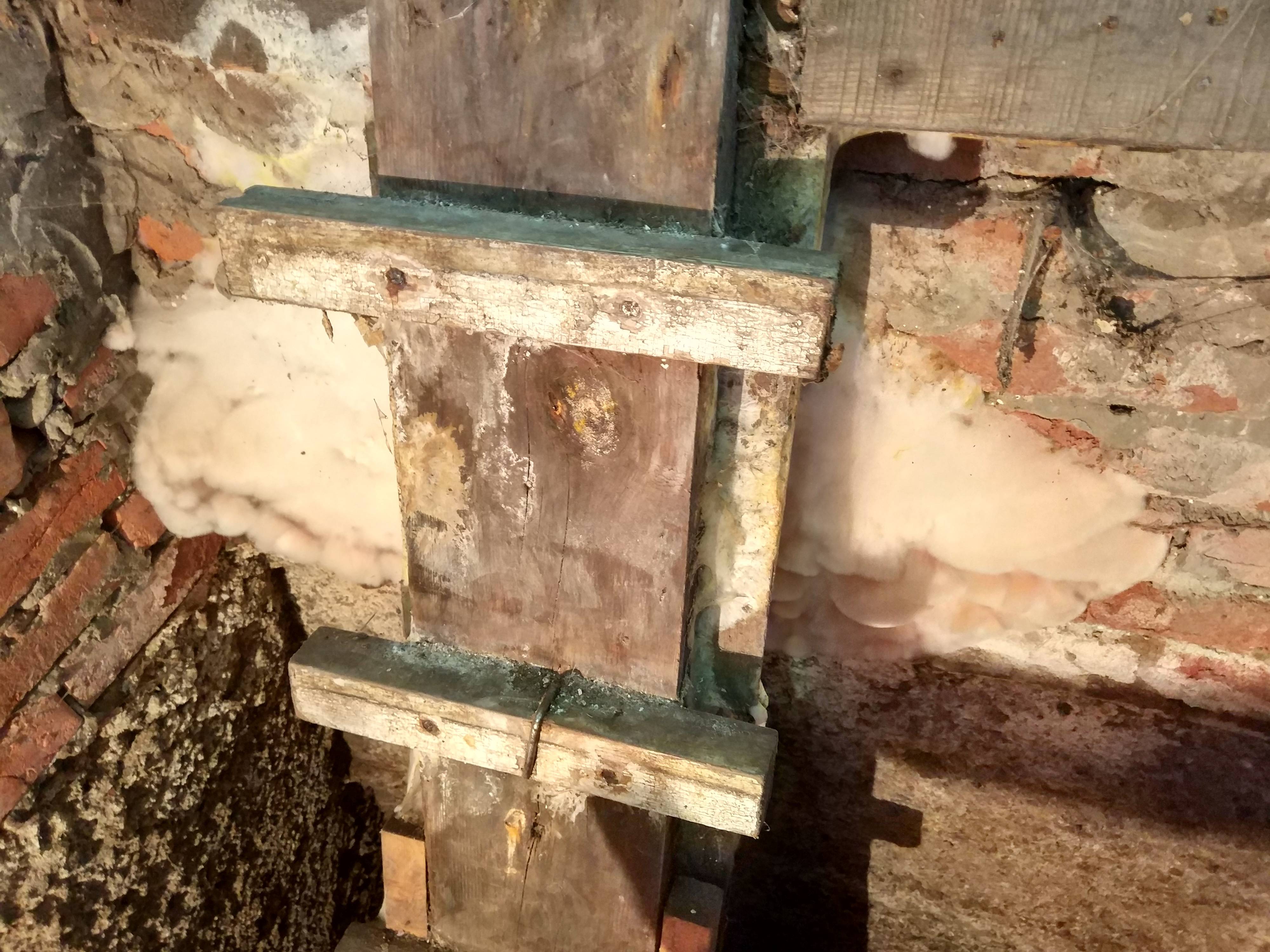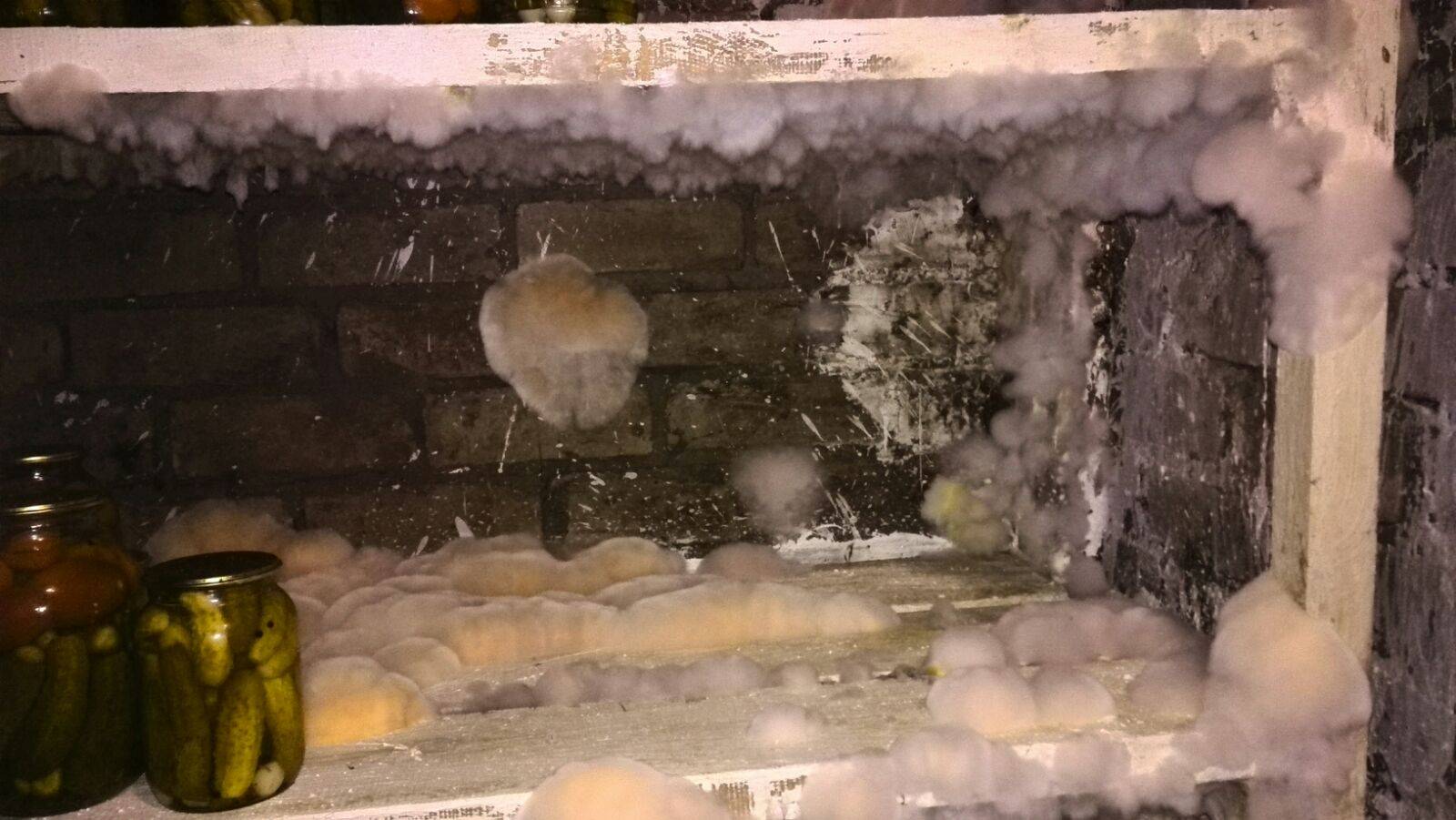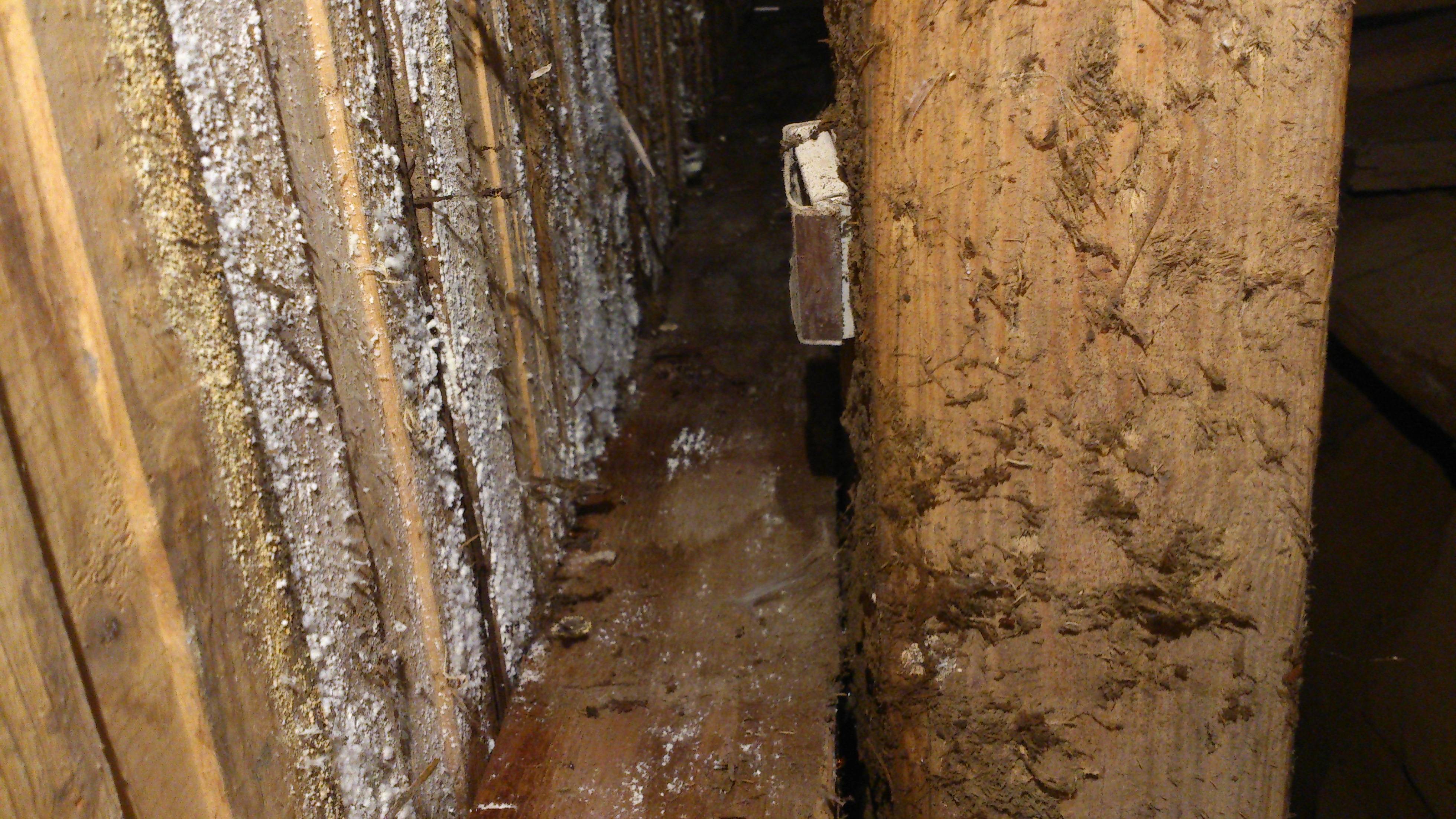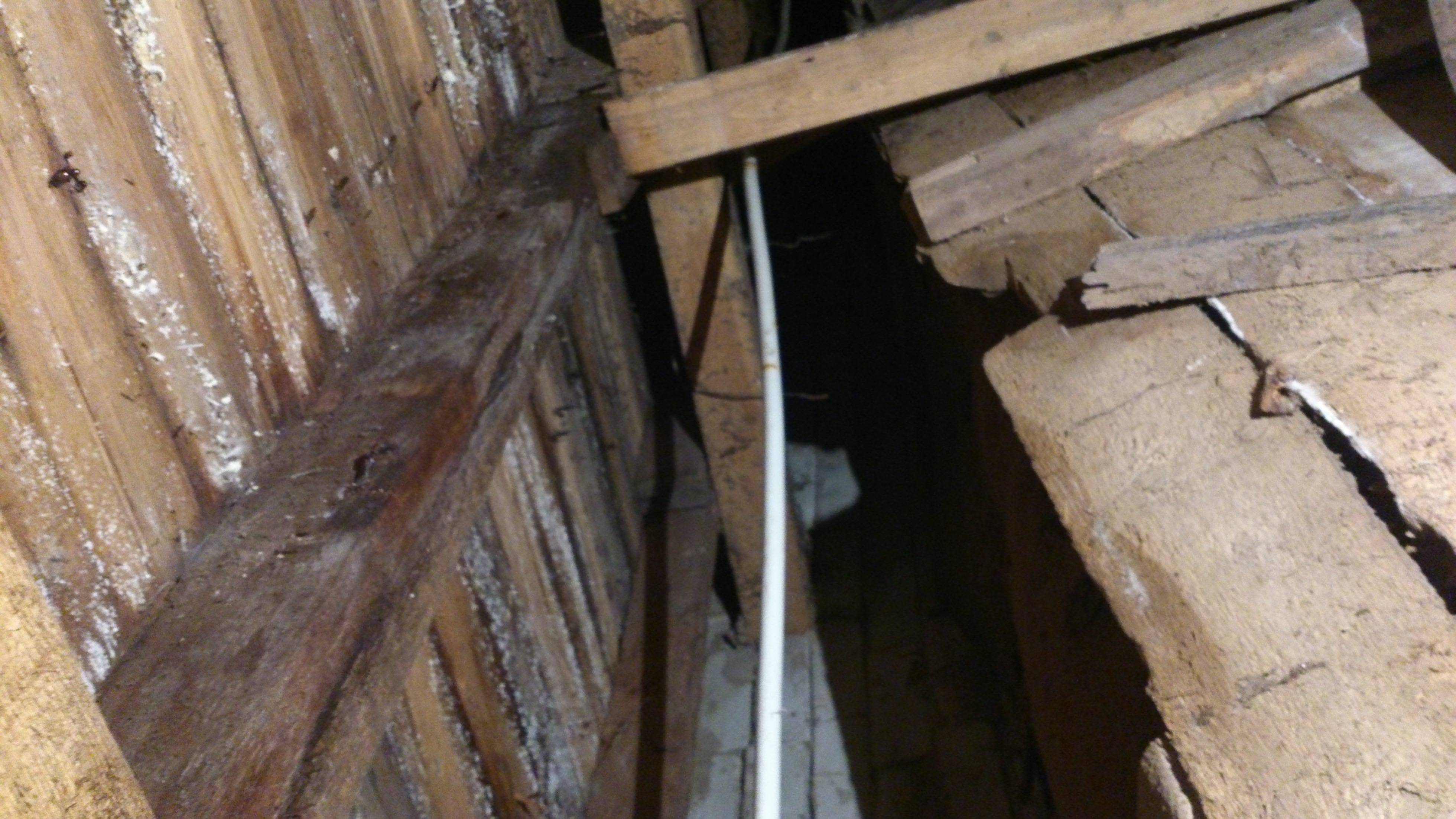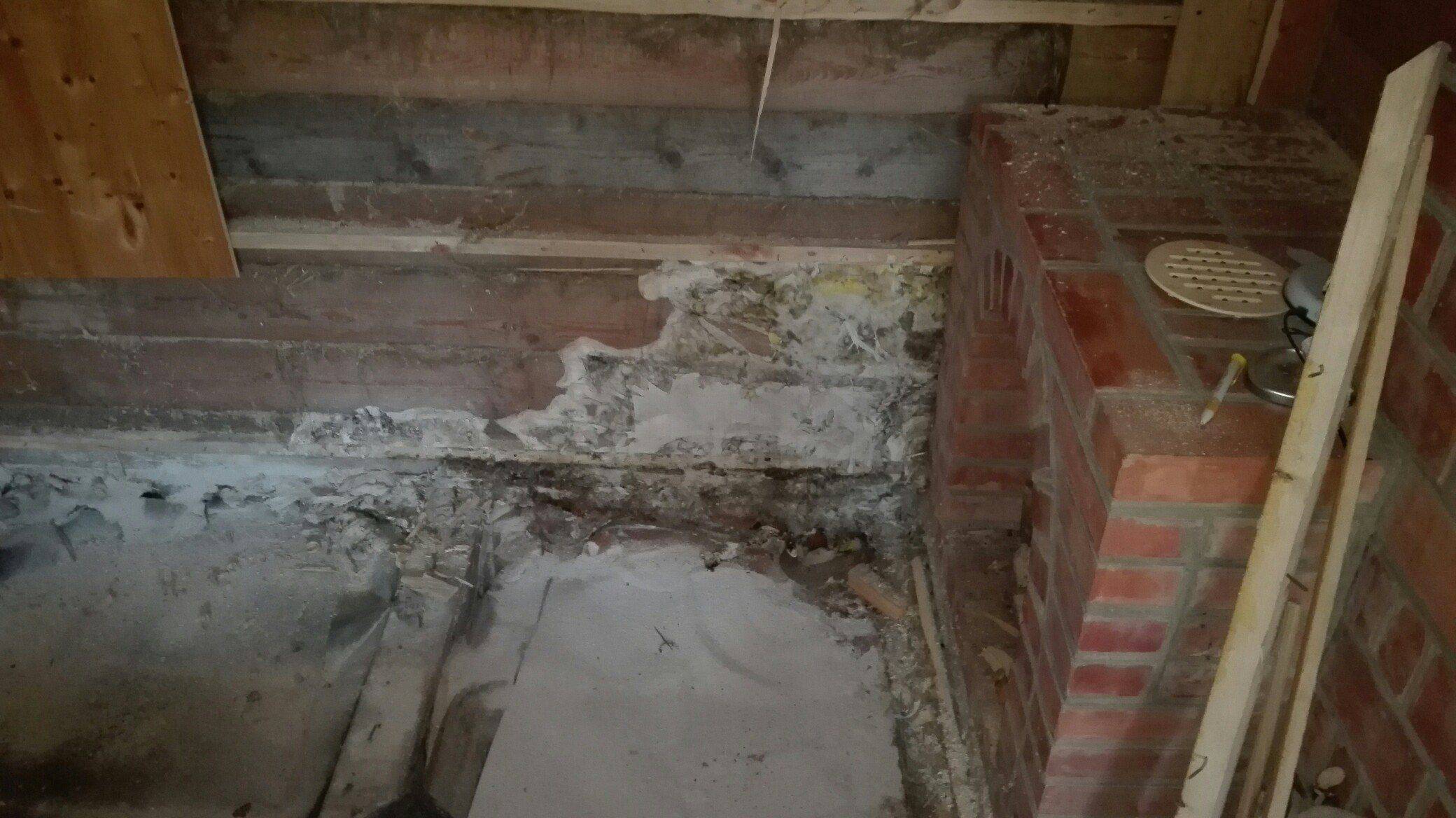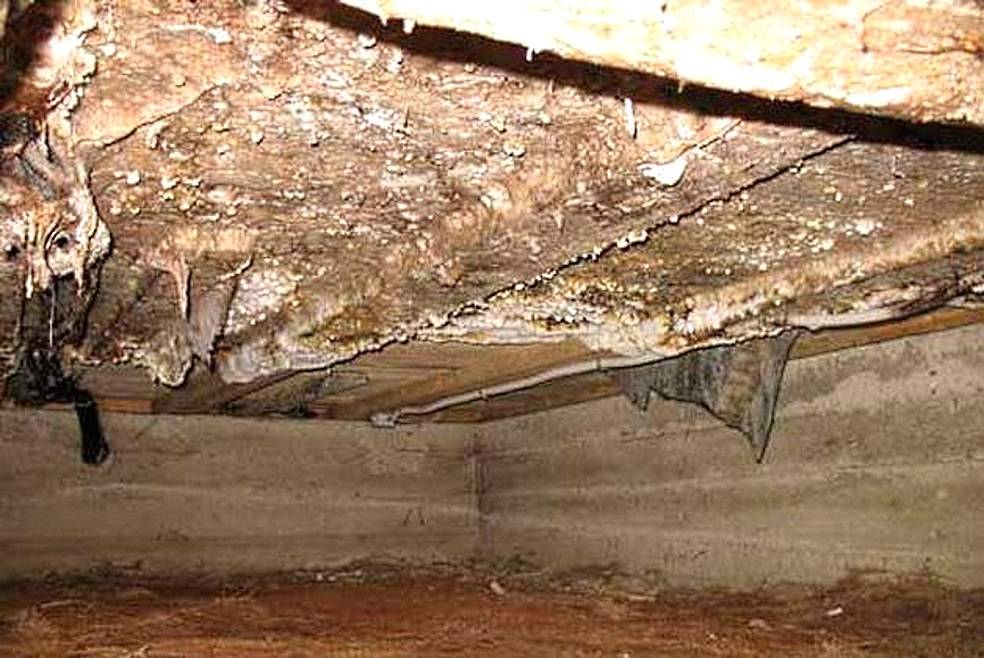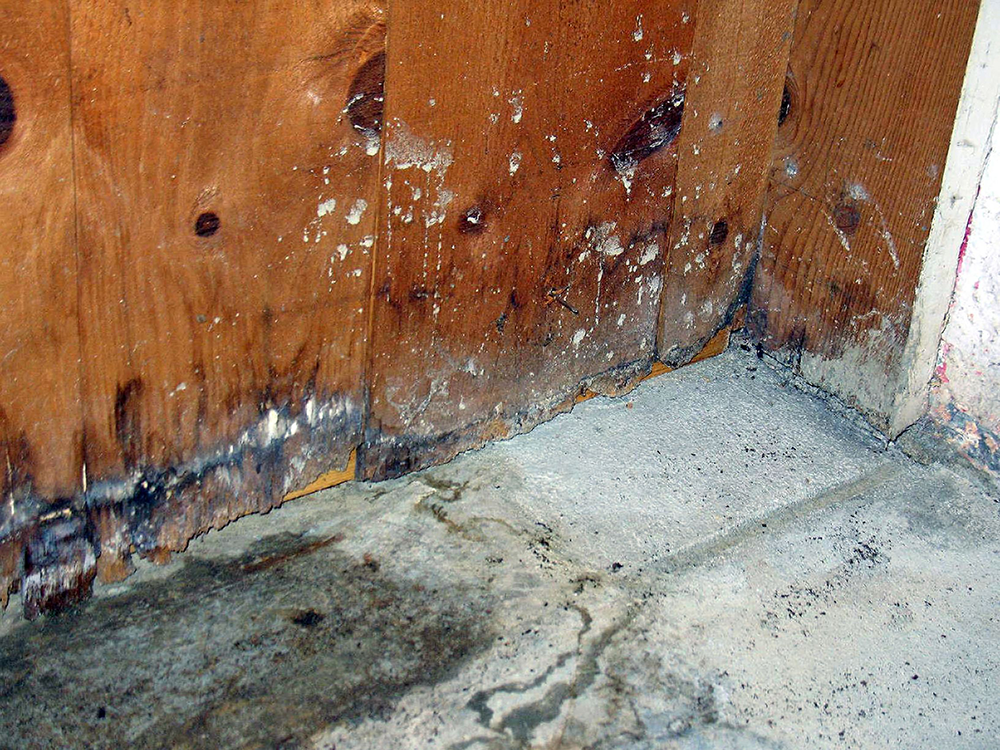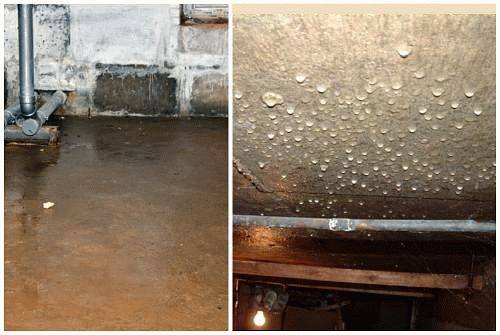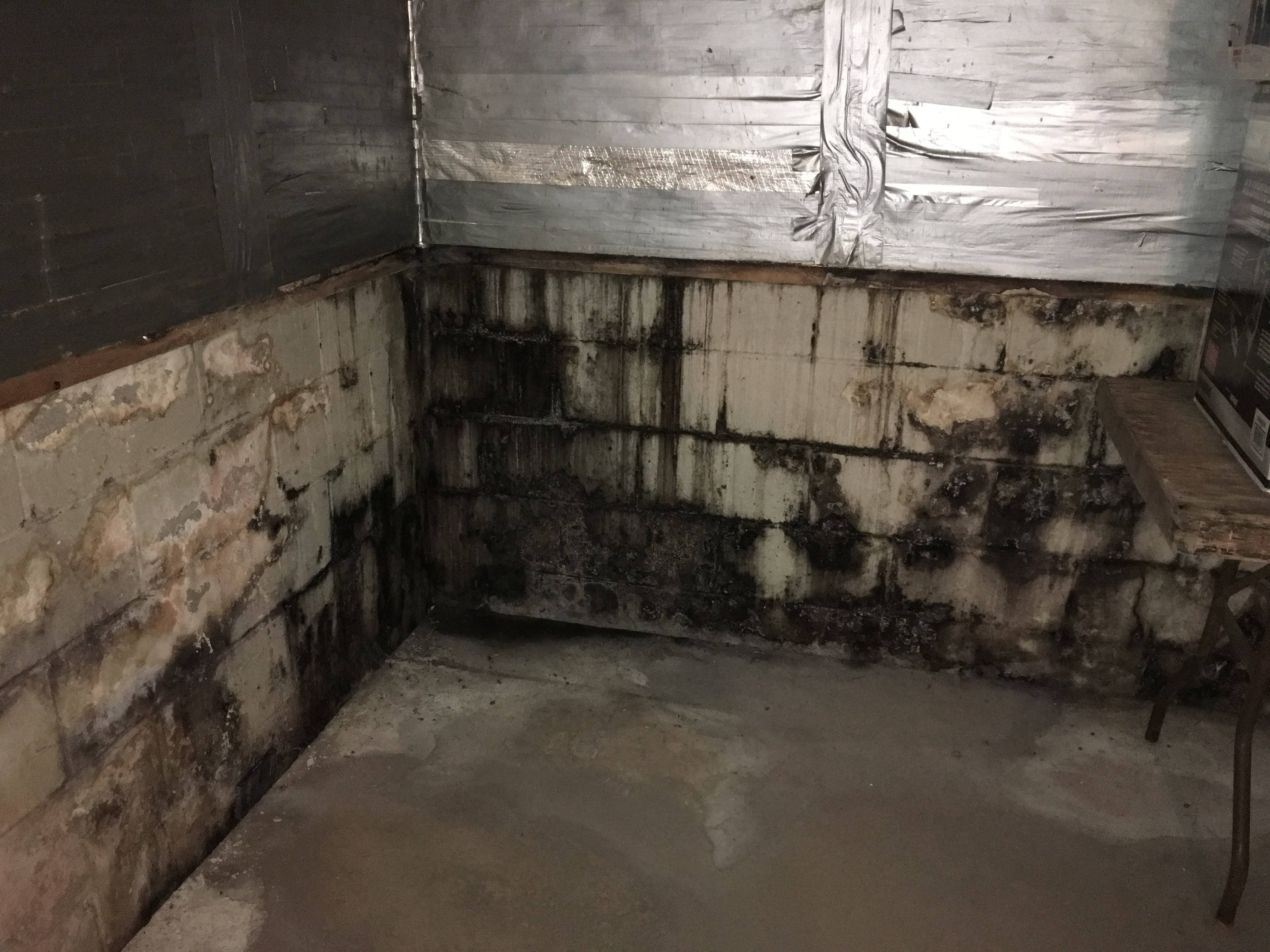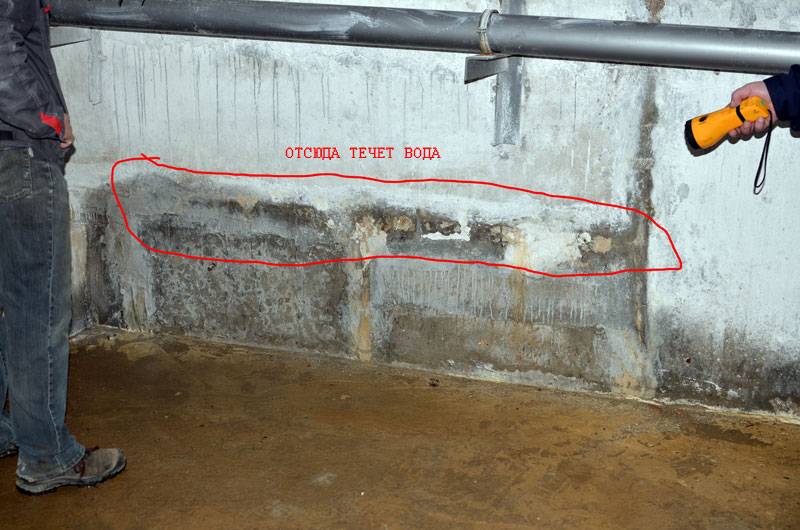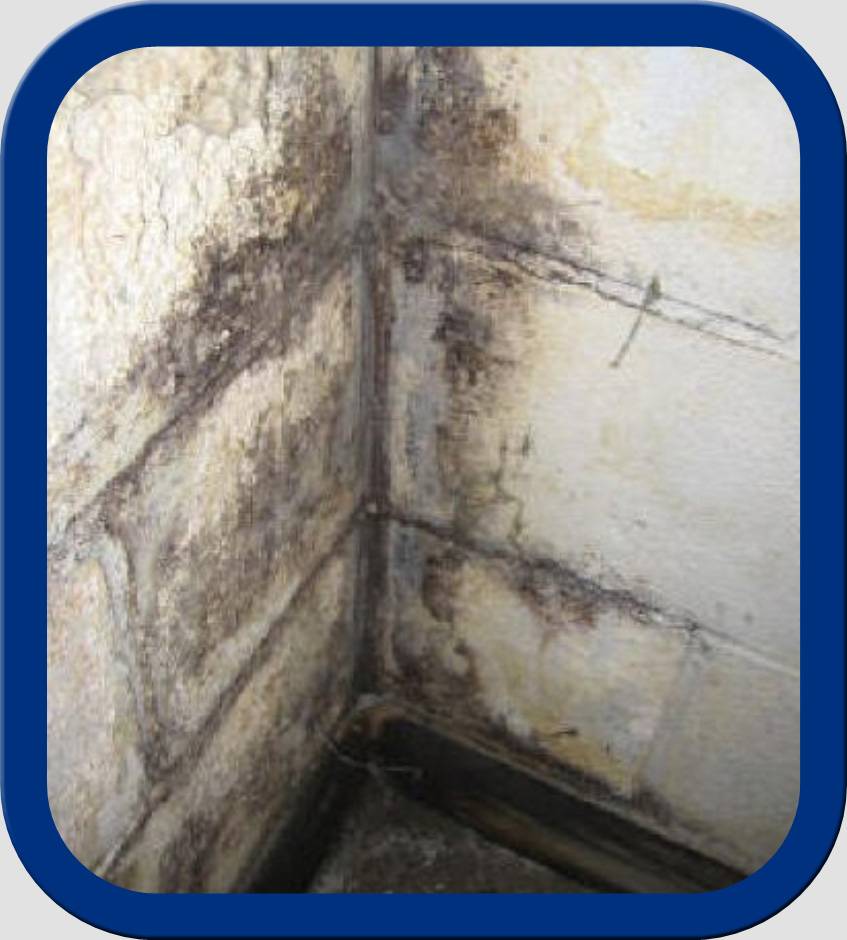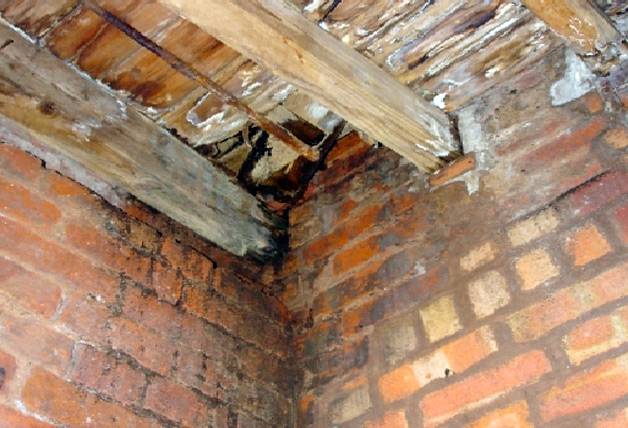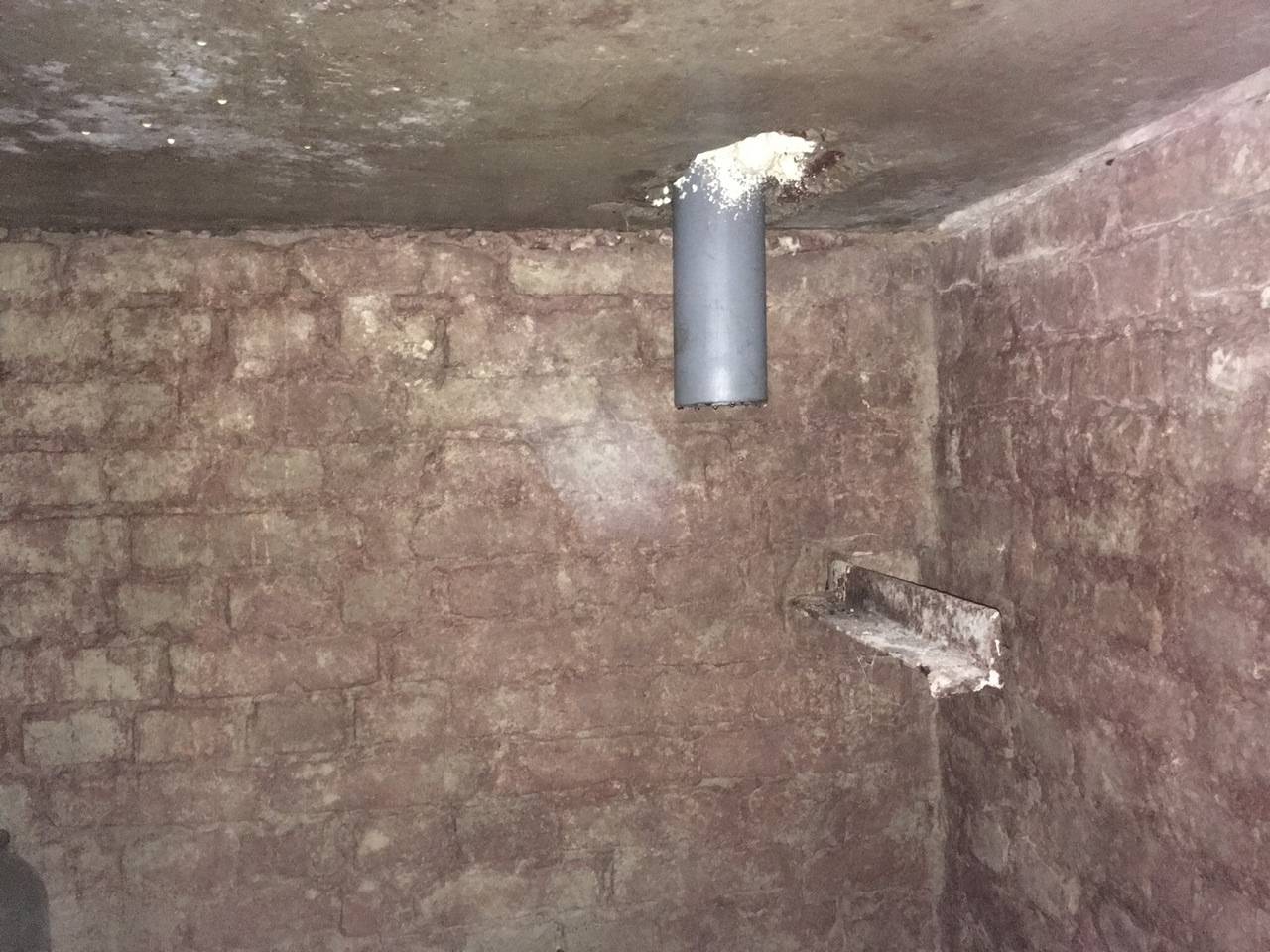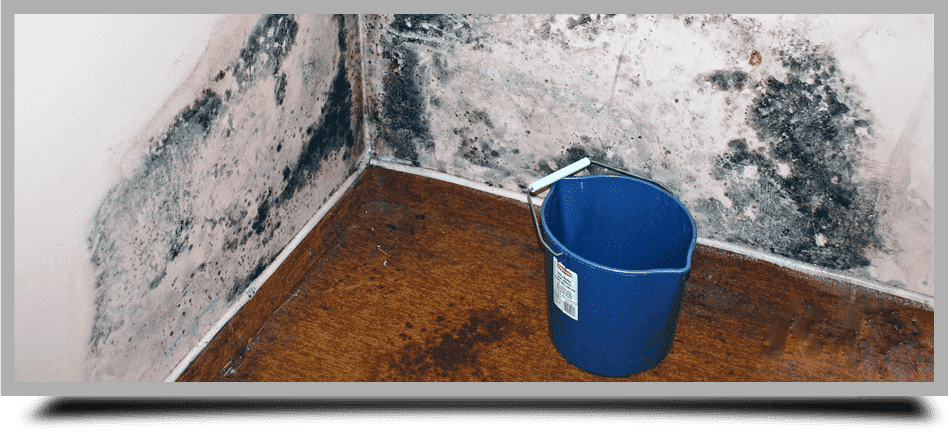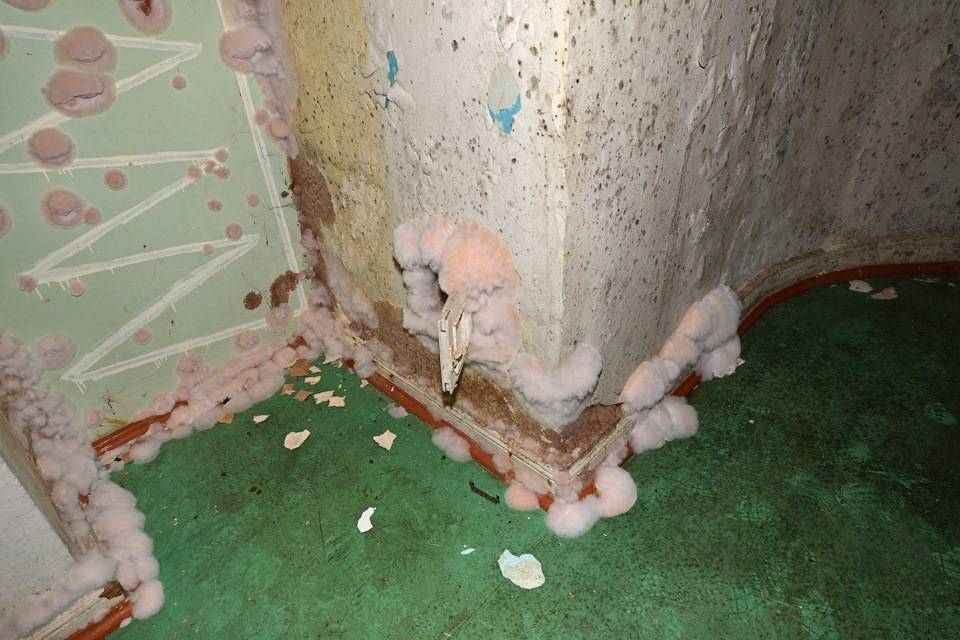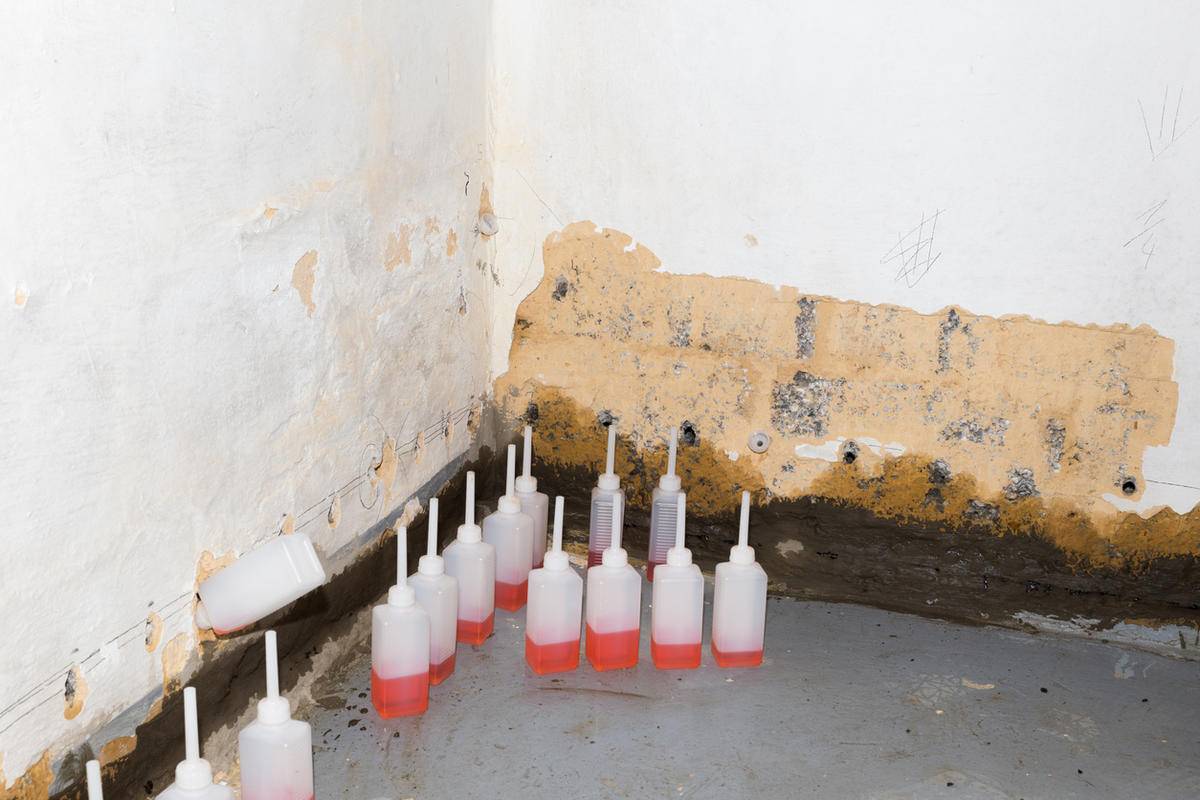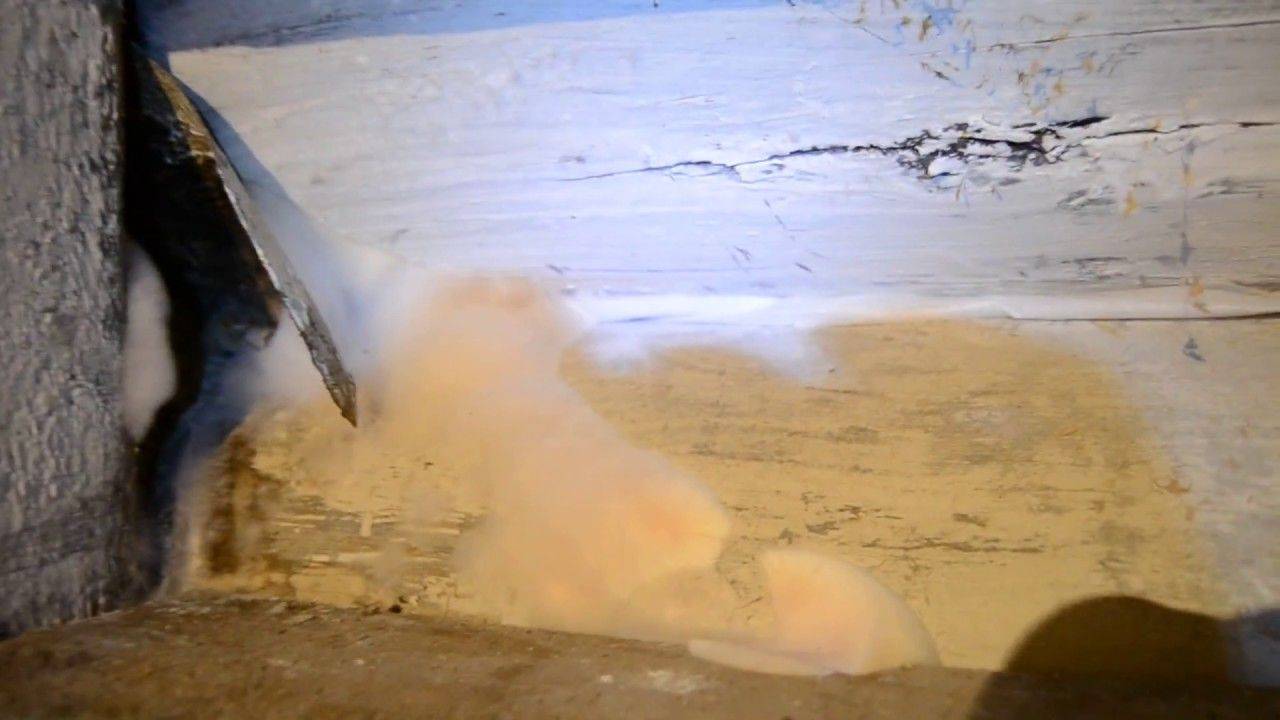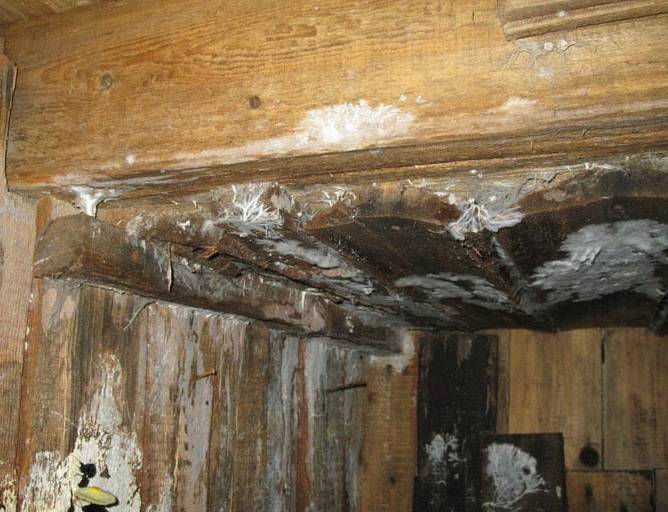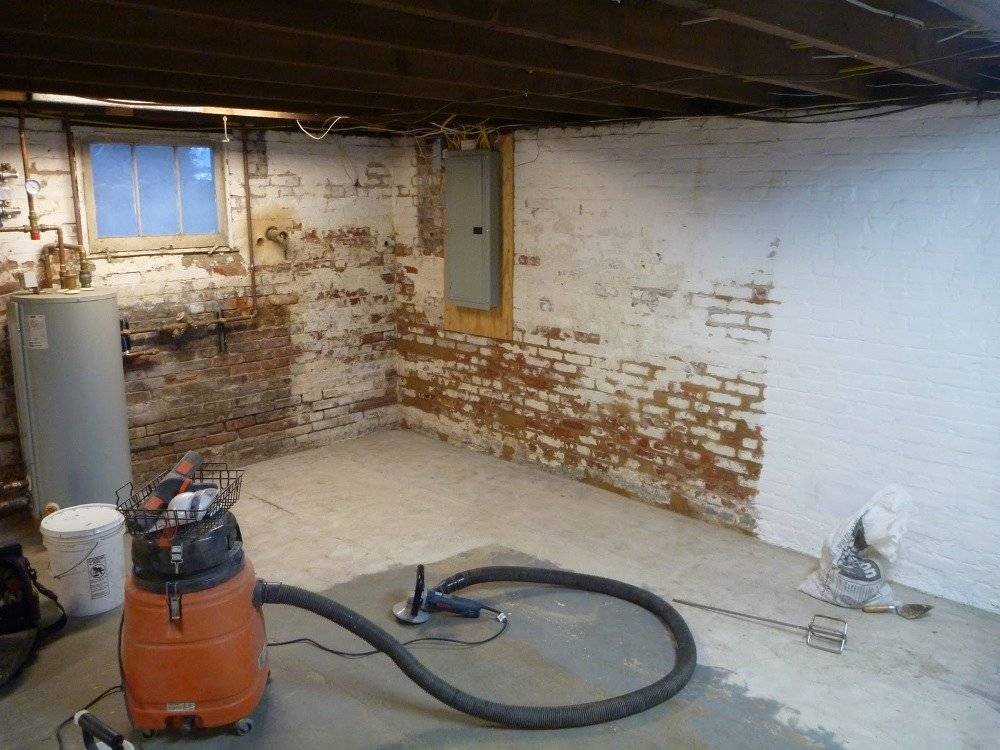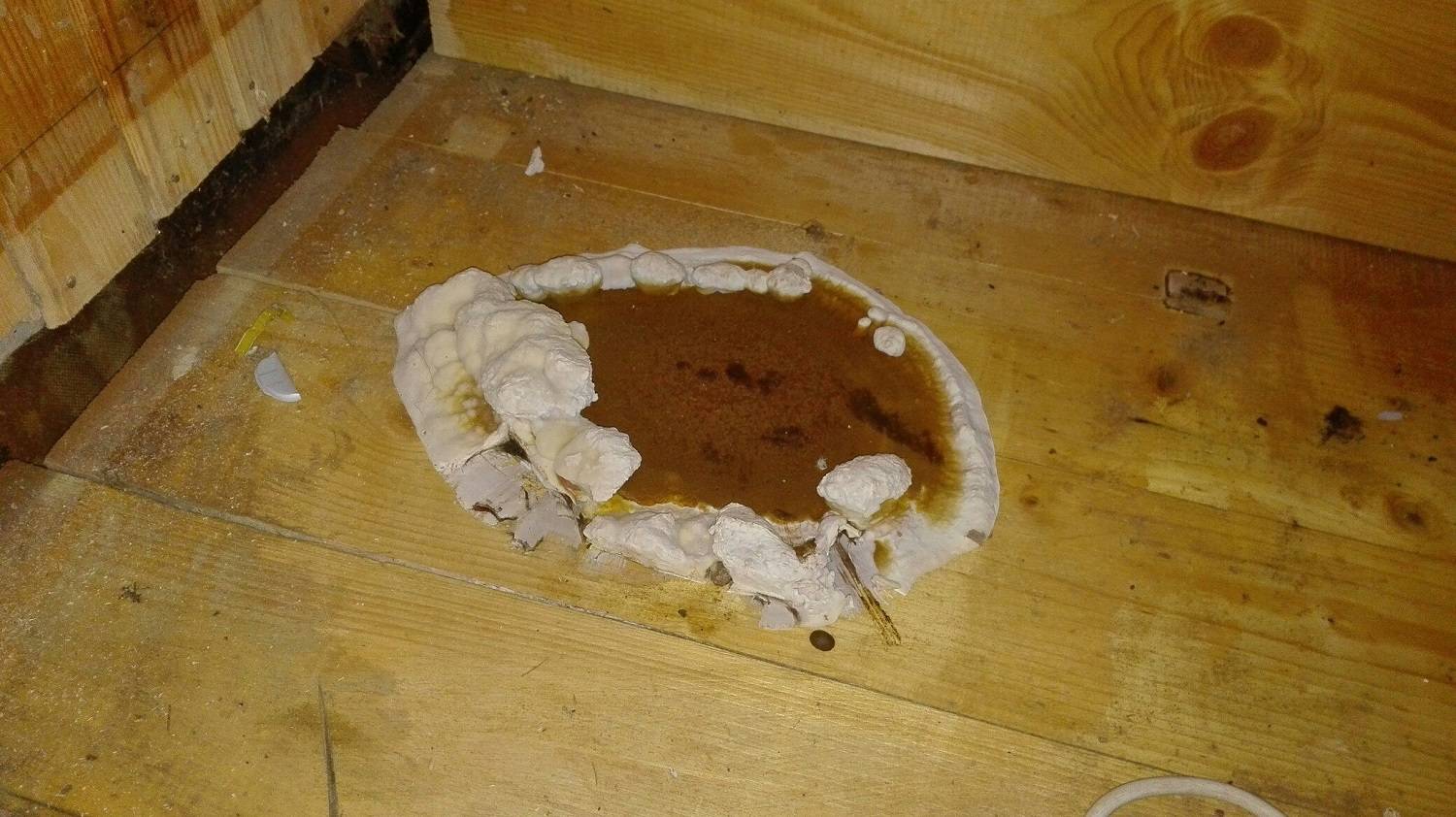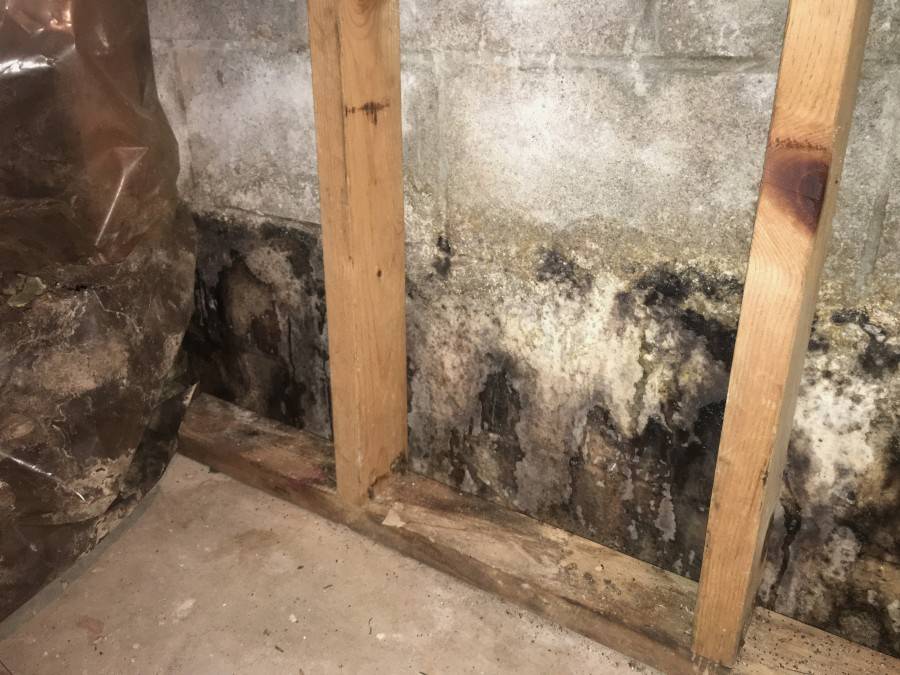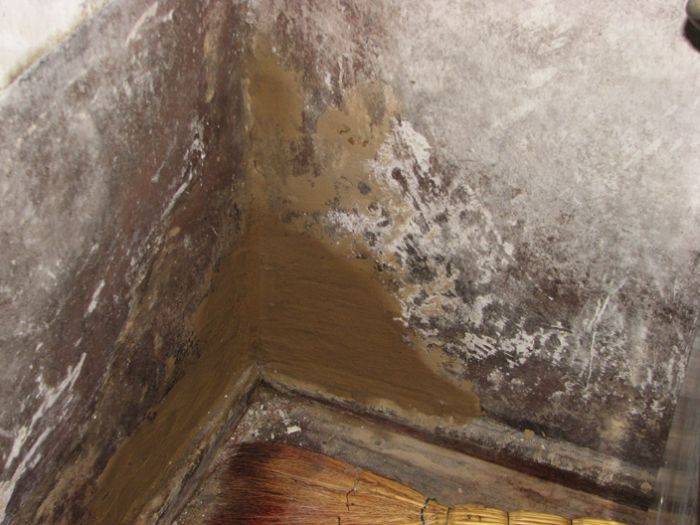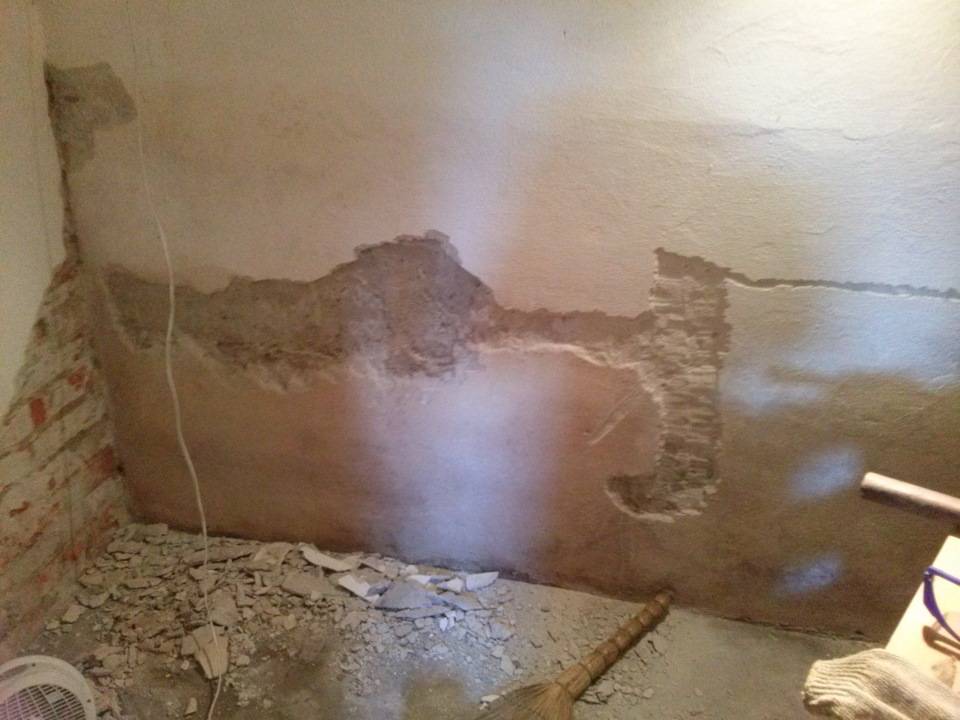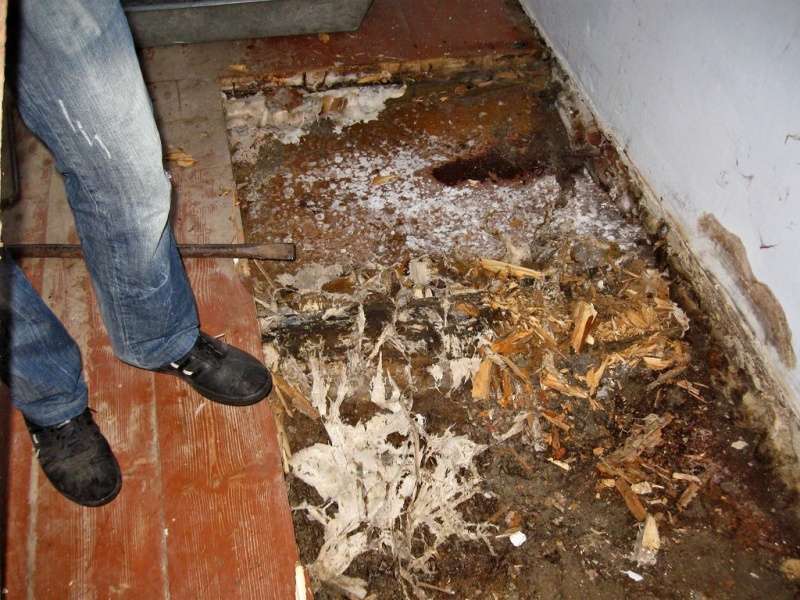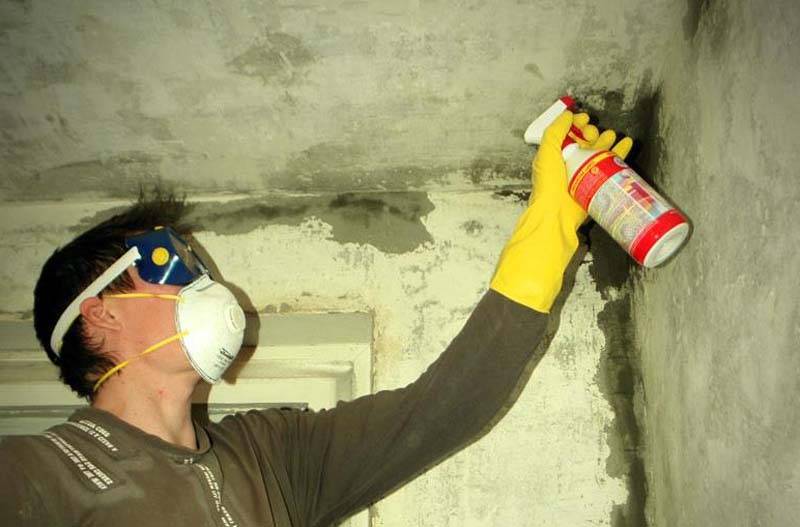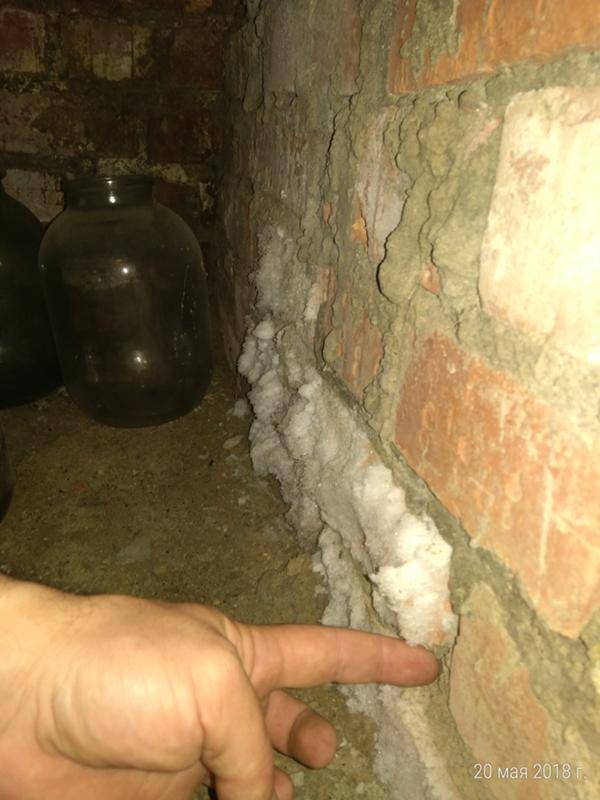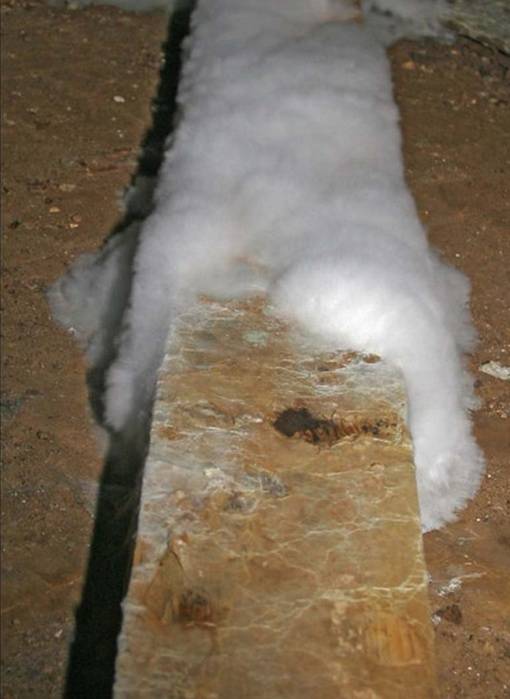If there is a small amount of mold or mildew
In this case, the easiest way is to use folk remedies that can least harm a person. But sometimes more powerful formulations have to be used.
Fire treatment
In this case, you can use a blowtorch or other available means. This is a mechanical method of removing mold, which will help to solve the problem only at the initial stage. After the mold has burned out, it is imperative to solve the problems that caused the appearance of hazardous particles.
Vinegar
In 80% of cases, this remedy helps to get rid of mold if the affected area is small. If small dots appear on the walls or ceiling, then you can "burn" them with ordinary table vinegar applied to a clean sponge. You can also dilute it in water in equal parts and rinse the affected surfaces thoroughly.
If the basement is seriously infected, a more powerful remedy can be prepared. For this:
- Pour half a glass of water into the container.
- Add 50 ml of vinegar and the same amount of hydrogen peroxide.
- We add 25 ml of boric acid.
- Slowly mix all the ingredients and heat the resulting mixture over low heat to 50-70 degrees.
- Immediately, while the mixture is warm, apply it to the affected areas of the concrete walls and ceiling.
- We are waiting for 15 minutes.
- We clean the surface with an old brush. We throw it out.
While this is a relatively complex recipe, it pays off.
Hydrogen peroxide
In this case, we need the usual 3% hydrogen peroxide, which is sold in any pharmacy. Since it is already highly diluted, you do not need to dissolve the liquid in water. It is enough to apply peroxide on a soft sponge and walk it along the walls and ceiling.
Due to the fact that the composition contains only 3% hydrogen peroxide, such a product may not provide long-term results. For a more neglected situation, you can make a concentrated composition:
- We buy tablets called "Hydroperit" at the pharmacy.
- We dilute (one piece is enough) in water according to the instructions.
- We get a concentrated mixture that is applied to the areas affected by mold.
Lemon acid
This is a very effective method for killing mold. But if the lesions are large, then you will have to spend a lot since citric acid is expensive. In this regard, it is more often used at the initial stage of fungal development.
Healthy! This method is considered one of the most safe for humans.
To prepare the solution, it is enough to dissolve 100 g of citric acid in a liter of water. After that, you need to apply the liquid to the foci of infection. The remaining mixture can be distributed in the corners (from there, mold often begins to grow). This method will allow you to get rid of not only the external signs of fungi, but also from the unpleasant odor.
Preventing dampness
As usual, this "disease" is easier (and cheaper) to prevent than to cure. It is still being solved at the design stage:
- If the groundwater level is close or in spring / autumn its level rises significantly, external waterproofing is necessary. On the outside, liquid compounds are applied to the walls (better) or rolled up (cheaper, but less effective).
- If the cellar is being built on a slope, above it, it is necessary to lay a drainage pipe into the ground, which will drain the sediment flowing down the slope.
- Around the cellar (or the building under which it is located) a blind area is made, which removes precipitation flowing from the roof.
-
Inside the cellar, in opposite corners, there should be two ventilation pipes with a diameter of at least 125 mm. One of them ends at floor level - 10 cm higher. Air from the street or room enters through it (supply pipe).The second ends almost under the ceiling - 10 cm below its level. This is a cooker hood. Outdoor ventilation pipes should be covered with umbrellas to prevent foliage and precipitation from getting into them. The exhaust pipe (the one that ends near the ceiling) should be higher and it is better to install a deflector on it - to activate traction. It can be painted black: due to the heating from the sun, the traction should be better. Another subtlety: in order for the draft to be good, ventilation ducts with natural air movement must be straight. If it is necessary to bend to the side, its angle of inclination should be at least 60 ° relative to the horizon, the length of the inclined section should not exceed 100 cm.
- There must be a vapor barrier between the room located above and the basement to prevent moisture from entering both the basement and the basement.
Inspecting the floor
Very often in the cellar, the floor is made earthen. It is often the source of excess moisture. Through it, the moisture contained in the soil gets inside. To reduce the humidity in the cellar, you need to level the earthen floor, tamp it and cover it with a thick plastic wrap. You can use roofing material, but it breaks more often. Although it seems to be more durable, it breaks due to less elasticity.
It is not necessary to pour sand or earth on top of the film. Sometimes there is a lot of water in the basement (accidental flooding). Then you simply take out the film, the water partly goes into the ground, partly evaporates through the ventilation. After the dampness is gone, you can cover the floor again. If there is earth or sand on top, you will need to poke around in this slurry, extracting a film.
If the floor in the cellar is earthen, most of the moisture enters through it.
If, after laying the film, the moisture level in the cellar has dropped, then you have found the reason. You can leave everything as it is, only periodically change the "flooring", or you can make a concrete floor with full waterproofing. The choice is yours. To prevent the film from tearing when walked on, knock down the wooden shields and throw them on the floor.
Improving waterproofing
The second reason why humidity rises in the basement is an insufficient degree of vapor barrier or waterproofing of the walls. This usually occurs if the cellar is lined with bricks, especially silicate bricks. The material is very hygroscopic and passes water vapor well. They settle in drops on the ceiling and all objects.
The problem can be solved if you make good external waterproofing: dig up the walls and apply bitumen mastic in two layers. Previously, they were coated with resin, but the mastic is more effective and easier to handle.
Brick walls require additional waterproofing
But earthwork is not always a joy, and it is not always possible to dig out the walls. In this case, you can make the internal waterproofing of the walls of the cellar. For this, there are cement-based impregnations: "Pnetron", "Kalmatron", "Hydrotex", etc. They penetrate to a depth of up to half a meter into the thickness of the material (concrete, brick, etc.) and block the capillaries through which water seeps. Water permeability decreases significantly. Their only drawback is the price. But they are really effective.
All of these measures will prevent excessive moisture in the basement. But what if there is already moisture, how to dry the cellar? Next, let's look at ways to reduce humidity.
External waterproofing
First, you need to check the entire building from the outside, because very often the reason that the basement floods or it just damp is that the drainage system is simply stupidly equipped around the house.
It includes:
-
- slopes on the roof, windows, above the porch;
- downspouts "directional", that is, draining water into the funnel of the underground stormwater or at least into the aboveground gutter;
- drainage system around the walls of the house;
- blind areas.
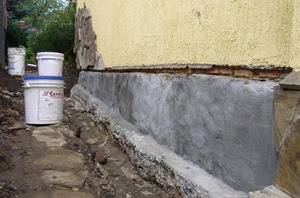 If all these components or at least some of them are missing, then this deficiency must be eliminated.You should start from the top, that is, from the slopes and drainpipes.
If all these components or at least some of them are missing, then this deficiency must be eliminated.You should start from the top, that is, from the slopes and drainpipes.
Now you can move on to the next step: protecting the underground part of the outer walls. For this:
- We remove the old blind area.
- We dig a hole a little more than half a meter wide outside the outer walls of the basement (so that you can climb into it and carry out work).
- Thoroughly dry the outer wall of the house (natural or forced).
- We coat the wall with antifungal compounds (the choice in building stores is simply endless).
- We coat the wall with bitumen mastic (you can use clay, concrete based on liquid glass or with additives that reduce moisture absorption);
- Optional step: we make an underground blind area from a sheet of roofing material. To do this, we fix it on the wall of the house 0.5 meters above the ground level and take it over the edge of the outer wall of the basement.
- We fill up the hole.
- We equip the blind area (you can use any kind of soft roof).
If you cannot afford serious earthwork, then you can do for the first time only with the last point
In this case, the sheet of the soft roof should partially go over the wall of the building (somewhere by 50–70 cm), and it is important to fix it well, for example, with the same bitumen. The second edge should go beyond the edge of the basement underground wall by the same 50-70 cm
Prevention of basement fungus and mold
It is easier to remove mold and mildew when measures are taken to prevent their occurrence. Therefore, prevention for rooms with high humidity should be mandatory, so as not to wonder why rot has appeared.
- The specificity of basements contributes to the appearance of moisture there. Therefore, it should be monitored regularly. The appearance of moisture can be prevented with the slaked lime already described above, which is recommended to be poured on the floor or kept in open containers on the shelves.
- Lime mixed with sand should be poured into boxes where food preparations are stored.
- You can periodically burn sulfur in cold and wet seasons, the vapors of which will prevent rot from starting.
- Airing is of great importance. Do not rely solely on the ventilation system. It is recommended to leave the doors to the basement open from time to time for several hours.
- The white moss powder mentioned above can be used preventively by placing small jars on the shelves. In this case, it is necessary to periodically change it.
Don't wait for mold to show up in your basement. The processing of walls, ceilings, floors, as well as racks, shelves, boxes should be carried out every summer, preparing a room for storing new products.
Fast drying with a roasting pan
You can remove excess air humidity and condensation from the cellar using the simplest brazier. This device is small in size (portable) is available in almost any suburban economy. In any case, you can ask your neighbors.
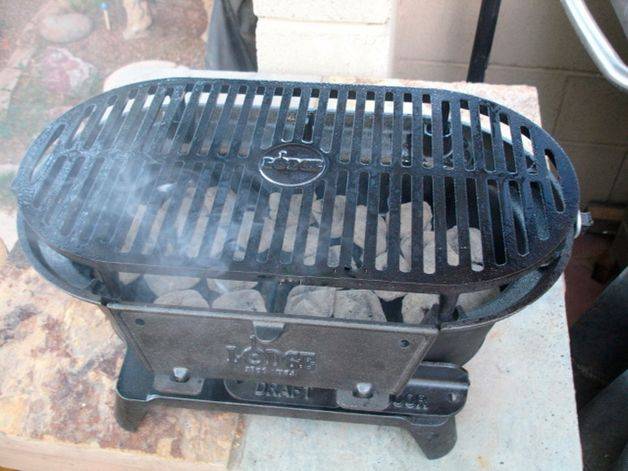
The roaster quickly heats up the air in the room.
If you did not find a suitable device for drying or a brazier, then you can do it yourself from the simplest old bucket.
The drying process itself is as follows:
- Before starting drying, open all the holes that go into the cellar (hole, ventilation pipes).
- Next, we lower our brazier (bucket) to the bottom of the storage. You can do it yourself or with a rope and hook.
- We light a fire in the brazier. It must be maintained for some time until the damp air is completely removed from the room.
- According to the laws of physics, warm and dry air from the bottom of the cellar will gradually rise, displacing raw air into the open holes. After a while, the cellar will completely dry out.
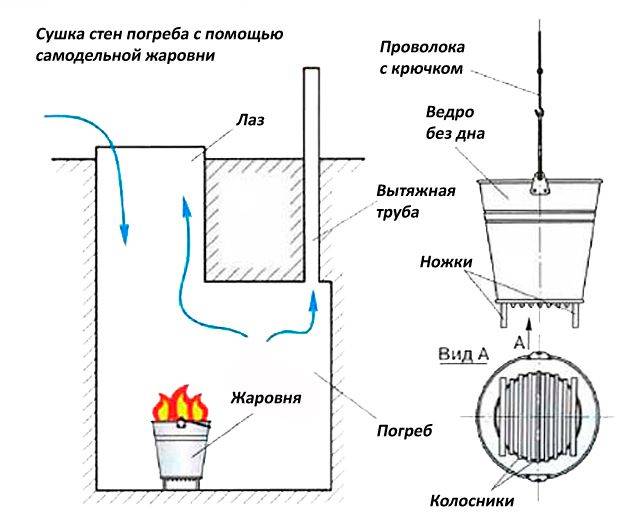
The principle of drying a basement using a brazier from a regular bucket.
Before drying the cellar in this way, it is necessary to provide some nuances:
We recommend using sawdust and wood chips to light the brazier. As soon as the fire flares up, larger wood can be thrown into the brazier.
It is important that the brazier is ignited before you lower it to the bottom of the cellar.
The heat from the fire will warm up the room quickly enough, bringing the damp air outside. In turn, dry air will quickly spread through the cellar.
It is necessary that the entire room is saturated with smoke. This will get rid of any biological activity in the storage, which also negatively affects the storage of vegetables and fruits. In this case, the effect of warming up the air will remain for a long time.
However, condensation in the cellar does not always disappear immediately after drying, so you need to wait a little and, if necessary, repeat the event, and also check the quality of the ventilation system.
Effective control methods
Before you start to deal with moisture, you need to determine the reasons for its appearance. All further actions depend on this. The reasons can be identified by the location of the moisture.
- If on the ceiling and walls, ventilation problems.
- There is only on the walls, you need vertical waterproofing of the walls.
- If on the floor, the groundwater has increased in volume.
External waterproofing
Check the quality of the installation, there may be problems with slopes and downpipes. Drainage system breakdowns are possible.
If you have no waterproofing installed at all, consider designing it. Later, protect the outer walls from moisture:
- Remove blind areas.
- Dig out 0.5 m from the walls along the entire perimeter.
- Dry the outside walls.
- Lubricate the wall with antifungal mixtures.
- Lubricate the wall with mastic, clay or concrete (one thing).
- Establish blind areas. They are fixed 0.5 m above the ground.
- Fill up the hole.
The installed moisture insulation system will help remove dampness.
Internal waterproofing device
In addition to the external drainage system, you need to make an internal one, with whose help the required temperature in the cellar is maintained. Procedure:
- Dry the room.
- Tidy up the walls, remove the old whitewash.
- Clean up any cracks.
- Reapply the antifungal mixture.
- Cover the walls with waterproofing compound.
Protect your basement from moisture
Your damp basement will no longer be like this, waterproofing will not allow excess moisture to penetrate inside.
Ventilation system
An additional ventilation system will help remove moisture in the basement. It is installed when air exchange is disturbed. There are two types of such ventilation:
- Natural. It uses the so-called. "Air vents" - holes throughout the room. According to the established rate, their area should be related to the area of the entire room as 1: 400.
- Forced. It is more often used in large rooms. It involves the installation of special equipment. It lets fresh air into the room if necessary.
A push installation costs a lot.
Mold prevention
If mold is not yet visible in the basement of the garage and at home, it is necessary to regularly carry out its prevention. For example, try treating all surfaces prone to fungus with Monarda essential oil. This natural remedy has a powerful antiseptic effect. A simple procedure will not take much of your time.
Also, take care of the issue of ventilation and waterproofing. Ventilate all areas of the house every 2-3 days. In this case, it is not enough to slightly open the window. Open all doors and windows wide open for at least 20 minutes. In the future, avoid closing the doors completely. Always leave a small gap to ensure minimum ventilation.
When it comes to waterproofing, the best solution is to carry out the renovation with suitable building materials. If this is not possible at the moment, try using an air conditioner with a specially impregnated filter or air purifiers. This will reduce moisture, which is one of the main causes of mold.
If you find small spots on the walls in or at home, it is completely unnecessary to carry out a complete treatment of the room. Try to get rid of them with vinegar or hydrogen peroxide. Apply some liquid to a cotton pad and wipe down the problem areas.
If the enemy has dug in your basement tightly - call the professionals.
So, the fight against mold involves the use of special tools, improvement of ventilation and waterproofing, as well as constant prevention. Only such a scheme will allow you to get rid of the problem and protect your home from harmful fungal spores.
Prevention of the reappearance of mold in the cellar
- Try to monitor the temperature of the cellar: it should not be too high or too low. If the basement is too warm in winter, it is necessary to lower the temperature in it to an acceptable one by opening a ventilation plug or a door for a while. Cold air is also not recommended for the normal functioning of the cellar, so you should take care of heating it or insulating it. It can be heated using electric heating devices, and it can be insulated with materials for thermal insulation or with snow / straw draped over the basement hatch.
- It is necessary to provide the basement with good air circulation. It is advisable to ventilate it every day, leaving it open for 15 minutes. You can also drill holes in the doors or arrange the free space between the floor and the door. A good solution would be to run along the pipe from the floor and from the ceiling for free flow of oxygen. Mildew is often caused by a too small or clogged air vent. The solution may be to use an exhaust fan, which is installed directly on the hole in the ventilation. The device improves air circulation, which means it resists the increase in humidity in the cellar. To prevent condensation from forming on the surfaces of the cellar, you can free up a small space between the wall and the shelves or shelves.
- In order for the fungus to recede, it is necessary that the basement remains dry. To do this, you need to provide it with good waterproofing, namely, cover the walls, floor and ceiling with a moisture-proof material after you treat them with an antifungal agent. You can then plaster the walls for extra protection. Consider the presence of a drainage system in the cellar, roof slopes, blind areas and downpipes. It is also necessary to seal up all cracks and cracks in the walls and floor with cement mortar or putty to avoid moisture ingress from the outside.
Not found
What is mold
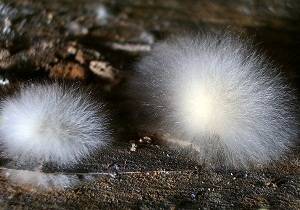
Fungal colonies that develop from spores are called mold. Spores are constantly in the air, only under the influence of unfavorable factors (high humidity, heat) they begin to "wake up" and actively multiply. Molds can grow on concrete, paint, wood. There are many types of mold, depending on this, you can see spots that look like black, brown, green, white cotton wool. There are also glowing fungi, but they are not dangerous for the walls and ceiling of the cellar.
Mold can destroy building and finishing materials, sometimes it comes down to the base. Therefore, the owners of mold in the cellar should think about getting rid of the mushroom colonies as soon as possible, otherwise they will have to make repairs or even rebuild. Allocate black, white, brown mold. The specific color depends not only on the type of fungus, but also on the stage of development, the color of the surface on which the uninvited "guest" settled.
Reasons for education
It is no secret that the home cellar has long been the best place for long-term storage of vegetables, fruits and preservation, especially in winter. 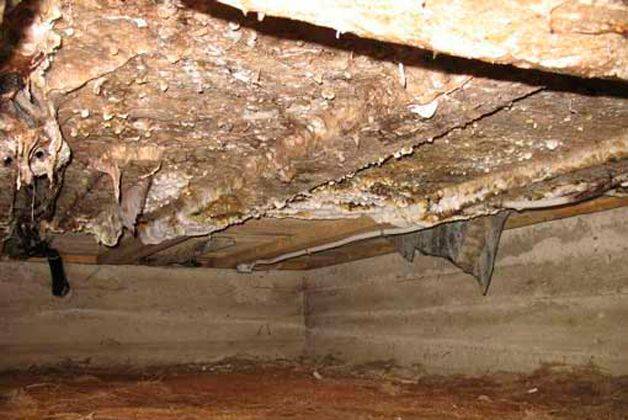 Therefore, as a rule, both in the cellars and in the underground, a relatively low temperature is always maintained and there is no bright light.But a certain disadvantage of such places is the accumulation of a large amount of moisture, especially in early spring, when melted snows and heavy rains literally flood the cellars and cellars. Subsequently, this factor will affect the formation of mold spores there. Among the main reasons for the occurrence of such a problem, one can also single out:
Therefore, as a rule, both in the cellars and in the underground, a relatively low temperature is always maintained and there is no bright light.But a certain disadvantage of such places is the accumulation of a large amount of moisture, especially in early spring, when melted snows and heavy rains literally flood the cellars and cellars. Subsequently, this factor will affect the formation of mold spores there. Among the main reasons for the occurrence of such a problem, one can also single out:
- violation and changes in temperature conditions, as well as the lack of proper ventilation in the room;
- non-insulated walls, which leads to their freezing. At the end of severe frosts, a large amount of moisture forms on the ceilings and walls;
- lack of insulation on floors and attic coverings;
- stagnant water near the foundation;
- lack of waterproofing in underground and cellars;
- the presence of errors in the planning of the main elements of the infrastructure in your territory, for example, the cellar was initially located in the wrong place (where there is an excessively high level of humidity, etc.).
All this together leads to the appearance of fungus and unpleasant mold in the basement.
Ways to eliminate fungus
Having dealt with the main causes and types of mold, it's time to find out how to get rid of it. At the moment, there are 3 effective techniques that allow you to successfully remove it from any room. In addition to them, there are special chemicals and numerous folk recipes aimed at completely eliminating the fungus.
Wood treatment with a protective substance.
Most of these methods involve major repairs in the basement and are only necessary if the situation is neglected. If the areas covered with mold are small and the risk of its reappearance is small, so-called "preventive techniques" can be used. The most popular is a solution prepared on the basis of 10 liters of water and 250 ml of 40% formalin. It is enough to treat the affected areas with it, and after drying, re-plaster and whitewash the walls and ceiling. With good ventilation, mold will never bother you again.
What will help if the fungus has infected large areas of your home?
- Active heating of the room with warm air.
- Using strong solutions that you can purchase or prepare yourself.
- Renovations that include replacing damaged wood panels and other building materials, as well as improving ventilation.
Below is more detailed information about these methods.
Ventilation system
The microclimate in the cellar is very important for the long-term storage of food and preventing the appearance of mold, while ventilation will provide an integral part of the microclimate - air circulation. Depending on the size, type and purpose of storage, natural or forced ventilation with a different number of pipes is provided. The simplest type of cellar ventilation is natural with an exhaust and supply pipe. For its correct installation and proper further functioning, several rules must be observed:
- In opposite corners of the room, 2 pipes are mounted - exhaust and supply.
- The supply air supply will ensure the supply of fresh air, its lower end is located at a height of half a meter from the floor, and the upper end at a sufficient height above ground level.
- An exhaust pipe, designed to remove air from the storage, is installed in the upper corner of the cellar and protrudes half a meter above the ridge. It is insulated with mineral wool so that condensation does not accumulate.
- The outer openings of the pipes are protected from snow and rain by canopies.
- The material of the pipes can be any - metal, plastic, reinforced concrete. Recently, PVC is often used, which is chosen for its durability and lightness.
- The diameter of the pipes must be the same.
A properly equipped and well-groomed cellar will ensure long-term storage of stocks. If a mold has started up in the room, this problem can be dealt with using modern and proven tools.Timely and thorough antifungal treatment of the cellar will not only preserve food, but also protect the health of its owner.
Share link:
The raw underground problem is solved as follows
The first way
Sealing the walls of the foundation from the inside. Additional high-quality concreting, followed by pasting the walls and floor of the underground with reinforced polyethylene film. The main difficulty in performing such work is to seal the film joints to an airtight state, especially in the corners. It is necessary to use special sealants and mastics. The film is fastened in the upper part of the wall with plastic dowels.
To protect against mechanical damage, an additional layer of concrete is placed on top of the film. Of course, it's easy to do this on the floor, but you have to tinker when placing the film on the walls. Perhaps the concrete will not hold on a large area of the walls, in which case they are lined with bricks in one row or protected with plastic sheets.
Second way
Creation of effective ventilation. If the supply and exhaust ventilation does not cope with its functions, forced ventilation is installed. Nevertheless, it is still desirable that natural supply and exhaust ventilation works. Through the vents, an inflow of fresh air will flow, and it will exit through a pipe of a rather impressive diameter (up to 0.5 m). Moreover, the bottom of the pipe, which acts as an exhaust, should begin practically from the bottom of the underground, thus, the cold air located below will tend upward. A lighted candle can be installed under the lower part of the chimney for a while under the chimney. The heat generated by the candles will be enough to speed up the air exchange by creating additional traction. Thus, the underground can dry out relatively quickly.
Third way
Performing groundwater drainage. To perform such a drainage of the foundation, grooves are made along the perimeter of the foundation under a slope to one of the corners of the building. Water through a pipe from this corner enters a sealed drainage well located outside the house. From time to time, water from the well will have to be pumped out.
Fourth way
Option at your discretion. In the cold season, close the vents with foam plugs. The fact is that outside warm air can contain much more moisture than cold air. As a result, it creates additional dampness due to condensation on the walls of the underground. Disadvantages of this method: what to do in case of sudden temperature changes? In the underground, as a result of the lack of ventilation, the processes of mold and decay can be significantly activated. Nevertheless, this method is worth trying as it is very easy to implement.
Fifth way
The easiest, but rather effective way to eliminate dampness in places where it is impossible to reach is to cover the ground with one of the waterproofing materials under the floor of the building: plastic wrap, roofing felt, etc. However, it is best to do this during the construction period, before starting the subfloor. Or undermine and re-renovate the floors. Moisture will not be able to rise from the ground, which means that it will not penetrate through the waterproofer. Press down on the film in several places. To prevent the film from moving for any reason (ubiquitous moles, draft through air vents, etc.).
It should be noted that there are other methods of dealing with dampness underground. We hope that the described options will give you an idea and help solve the problems of dealing with high humidity under the floor of your house!
If your basement is damp, then it is fraught with many problems, which are not always easy to get rid of. Very often, due to excessive moisture, the insulating properties of the floor and walls deteriorate, and the strength of the materials also decreases.Even at the construction stage, work should be carried out to eliminate the likelihood of condensation in the room, since it will not be so easy to get rid of dampness in the basement otherwise.
If you want to remove dampness from a basement or cellar, you must first find the reason for its appearance. Moisture can enter the basement from the street or simply act as condensation on the inner surfaces of the walls and ceiling. Often the main source of dampness is obvious, but sometimes it is not easy to find it, and in such cases, homeowners hire specialists to find them. They determine the temperature and humidity in different parts of the room, assess the tightness of the basement, and find the places of air penetration from the street.
How to understand that the moisture level in the cellar is high
There are several options for how to understand when you need to take emergency action. The easiest one is to use a hygrometer. This is a special device that shows accurate indoor humidity readings. As in a regular refrigerator, in a concrete cellar, this figure should be 85-95%.
If there is no hygrometer, then proceed as follows:
- Pour water into a glass container and send it to the refrigerator for 24 hours.
- We put a container with cold water in the underground storage and see what happens.
- If after a while the glass begins to dry, then this indicates that the humidity is too low. In the absence of any changes on the walls of the container, we can say that the humidity in the room is normal. But if drops began to appear on the glass, then this indicates an increased moisture index.
Also, high humidity is indicated by condensation on the walls and ceiling, the appearance of puddles of water on the floor. But how do you solve such a problem? There are several effective methods.



